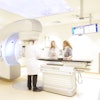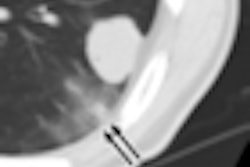Image-guided radiation therapy (IGRT) may yield improved outcomes for moderately to severely obese prostate cancer patients, according to a study published in the September 1 issue of the International Journal of Radiation Oncology, Biology, Physics.
In contrast to external-beam radiation therapy, IGRT corrects for prostate shifts, which, if not planned for, can lead to incorrect radiation doses to the disease site, according to the study. The study team found that severely obese prostate cancer patients (a body mass index of greater than 35) do have larger prostate shifts during treatment.
The percentage of moderately to severely obese patients with a left-to-right shift of greater than 10 mm was 21.2%, compared with only 1.3% of patients at normal weight, according to the study team.
Authors on the study included researchers from the Carol G. Simon Cancer Center at Morristown Memorial Hospital in Morristown, NJ, and the Uematsu-Atsuchi-Serendipity Oncology Center in Kagoshima, Japan.
Related Reading
Survey: Radiation therapy equipment use far less than 90%, August 17, 2009
ARRS: MRI detects prostate cancer spread, April 28, 2009
IGRT corrects for prostate shift in obese patients during treatment, March 23, 2009
Increasing BMI may impact choice of prostate cancer treatment, September 25, 2008
Obesity, overweight associated with increased prostate cancer mortality, November 19, 2007
Copyright © 2009 AuntMinnie.com



















